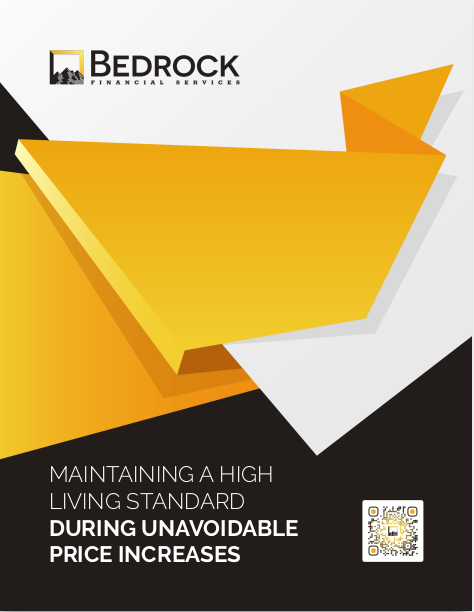Key Takeaways
-
AI-powered workflows are now essential for advisors looking to scale their services without increasing work hours. From lead generation to client service, automation tools are driving sharper efficiency and better outcomes.
-
Advisors who embrace AI are pulling ahead of competitors by offering faster response times, personalized advice, and data-backed planning—all without expanding their teams or burning out.
The Competitive Pressure on Advisors Is Real
In 2025, financial advisors are facing more pressure than ever. Clients expect fast, hyper-personalized service. Compliance demands are rising. And the number of hours in a day? Still twenty-four. If you’re still operating manually, you’re not just working harder—you’re falling behind.
That’s why AI-powered workflows are becoming the foundation for modern advisory practices. They allow you to deliver better client experiences, sharpen your back-office efficiency, and scale without hiring more staff or sacrificing your personal time.
What Exactly Are AI-Powered Workflows?
AI-powered workflows refer to sequences of tasks managed and executed with the help of artificial intelligence. These workflows streamline complex processes like onboarding, portfolio monitoring, and compliance checks. They take the manual, repetitive labor out of your hands and put machine learning, natural language processing, and predictive analytics to work.
Here are a few core components typically involved:
-
Data Aggregation Tools: Pull client data from multiple sources into a single, unified platform.
-
NLP-Powered Chatbots: Handle client inquiries instantly and around the clock.
-
Predictive Analytics Engines: Identify patterns in spending, investment behavior, and life events.
-
Automated Compliance Checks: Monitor activities against changing regulations without manual review.
-
AI-Powered CRMs: Trigger personalized outreach based on real-time client behavior.
How These Workflows Save You Time Every Week
One of the biggest advantages of AI-powered workflows is time savings. Many advisors report saving 10 to 15 hours a week by automating routine tasks. Here’s how that happens:
-
Client Onboarding: AI fills forms using existing data, flags missing information, and confirms identity, cutting onboarding time by over 50%.
-
Meeting Preparation: AI systems auto-generate personalized meeting briefs using client portfolios, financial goals, and past communications.
-
Portfolio Monitoring: Algorithms flag performance anomalies and suggest rebalancing strategies so you don’t have to review each account manually.
-
Email and Follow-Up Automation: Tools send follow-up emails based on client behavior, such as clicking on a link or missing a scheduled meeting.
These cumulative time wins let you refocus on prospecting, relationship-building, or even logging off a little earlier.
Why Your Clients Actually Prefer AI-Supported Service
Many advisors worry that clients will resist AI-driven service. The reality in 2025 is quite the opposite. Today’s clients value speed, accuracy, and customization—all of which are improved by AI.
Clients are more comfortable than ever with AI-backed communication, especially when it delivers:
-
24/7 Responsiveness: Virtual assistants can answer common questions even while you sleep.
-
Consistency: Automated workflows eliminate the errors that come from fatigue or missed steps.
-
Personalization: AI tracks changes in client behavior and adapts communication styles or investment suggestions accordingly.
By pairing your human judgment with AI-powered support, you enhance the client experience without sacrificing the personal touch.
Areas Where AI Can Outperform Manual Processes
AI doesn’t just replicate what you do manually. It actually improves outcomes in certain areas by removing biases, enhancing accuracy, and working faster than any human team.
1. Prospect Targeting
Machine learning models can scan thousands of data points to identify high-intent leads based on financial behavior, location, and demographics. You can then prioritize outreach more effectively.
2. Risk Profiling
Instead of relying on static questionnaires, AI tools analyze real-time market data, spending patterns, and financial habits to create dynamic risk profiles.
3. Portfolio Construction
AI engines evaluate asset correlations, diversification gaps, and future projections across global markets to generate optimized portfolios.
4. Compliance Reporting
With regulatory changes occurring frequently, AI systems update reporting protocols in real time and flag discrepancies without manual review.
5. Client Retention
By analyzing sentiment in client communications, AI can detect dissatisfaction early, triggering proactive outreach to address concerns.
You Don’t Need to Be a Tech Expert to Use These Tools
A common misconception is that AI requires technical knowledge to implement. In 2025, that’s no longer true. Most AI-powered platforms are designed with user-friendly interfaces and offer plug-and-play functionality.
Vendors typically offer onboarding support, training sessions, and pre-configured workflows tailored for financial professionals. You don’t need a data science background to:
-
Set up email triggers based on client activity
-
Review AI-generated summaries of client interactions
-
Adjust workflow rules based on changing business needs
If you can operate your CRM, you can operate AI-powered workflows.
What to Automate First: A Timeline for Implementation
Rolling out AI-powered workflows doesn’t have to be overwhelming. Here’s a practical, three-month timeline you can follow to get started:
Month 1: Automate Scheduling and Reminders
-
Implement a tool that syncs with your calendar and emails personalized scheduling links.
-
Set automated reminders for client reviews and key dates.
Month 2: Streamline Communication
-
Integrate an AI email assistant that sends follow-ups and replies to FAQs.
-
Launch a chatbot on your website to handle new inquiries.
Month 3: Enhance Client Onboarding
-
Adopt an onboarding workflow that pre-fills forms and uses document recognition.
-
Use digital ID verification to speed up compliance checks.
Once the basics are running smoothly, you can scale into more advanced areas like predictive portfolio insights and automated risk rebalancing.
How to Measure the ROI of AI Integration
As a financial advisor, you need to justify every tool you add to your practice. Here are the top performance indicators to track when evaluating your AI investment:
-
Time Saved per Week: Compare hours spent on tasks before and after automation.
-
Client Response Times: Track improvement in turnaround for service requests.
-
Lead Conversion Rates: Evaluate how AI-qualified leads perform versus manually sourced ones.
-
Retention Metrics: Monitor churn reduction among clients with automated engagement.
-
Compliance Accuracy: Compare errors or flagged issues in manual vs. AI audits.
After three to six months of integration, most practices start seeing positive ROI in both client satisfaction and operational efficiency.
What Advisors Risk by Not Adopting AI
Inaction is a risk. Advisors who resist automation often fall into a pattern of:
-
Spending excessive time on low-value administrative work
-
Delivering inconsistent service quality
-
Failing to keep up with compliance updates
-
Losing high-value clients to faster, more responsive competitors
As your peers lean into AI to do more with less, sticking to traditional workflows makes your practice look slower and less innovative.
AI Is Making It Easier to Compete at a Higher Level
The reality in 2025 is that AI is not about replacing advisors. It’s about enabling you to operate at a higher level without exhausting your time or your team. Whether you serve 50 clients or 500, AI-powered workflows give you the infrastructure to:
-
Maintain personalization at scale
-
Respond to changes instantly
-
Stay compliant without a dedicated legal department
This is how smaller advisory firms are competing with national giants—by automating their operations and focusing human energy on strategy and relationships.
Ready to Make AI Work for You?
If you want to stop chasing tasks and start scaling your results, the time to act is now. AI-powered workflows aren’t futuristic anymore—they’re the present-day competitive advantage that your peers are already leveraging.
We at Bedrock Financial Services help professionals like you implement smart automation strategies without complexity. From AI-enabled CRMs to hands-free lead nurturing, our tools and training give you back the time to focus on what truly matters: your clients.
Sign up today to see how we can transform your practice without adding hours to your week.







